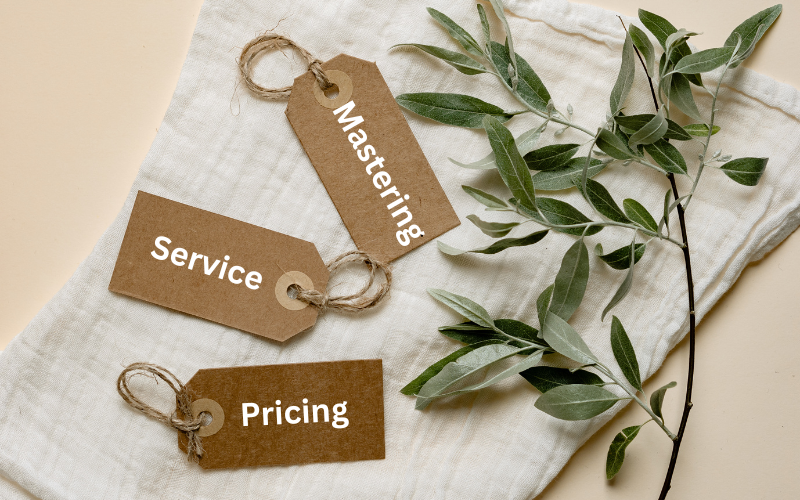
Mastering Service Pricing
Pricing your services correctly is one of the most critical aspects of running a successful trade business. Whether you are a landscaper, electrician, or general contractor, understanding how to calculate the cost of your services and setting profitable prices can mean the difference between thriving and merely surviving.
Let’s break down the essentials so you can confidently price your services and ensure your business remains profitable.
Understand your costs
Before you can price your services, you need to know your costs, including direct and indirect costs:
Direct costs: These are expenses directly tied to the job. They include materials, labour, and any subcontractor fees. For example, if you are a plumber installing a new water heater, your direct costs would include the water heater itself, pipes, fittings, and the time you or your employees spend on the job.
Indirect costs: These expenses keep your business running but are not tied to a specific job, including rent, utilities, insurance, vehicle maintenance etc. Even if you are not on a job site, these costs are ongoing.
Calculate your breakeven point
Your breakeven point is where your revenue covers all your direct and indirect costs. To calculate it, add up all your fixed costs (such as rent and insurance) and divide this figure by your gross margin percentage.
Example: If your fixed costs are £3,000 per month and your gross margin is 30%, your breakeven point would be £3,0000 ÷ 0.30 = £10,000
This means you need to generate £10,000 in revenue each month just to cover your costs.
Factor in your target profit
To be profitable, you need to charge more than just your breakeven point. Decide on a reasonable profit margin that reflects the value of your services, your experience, and market conditions. Most trade businesses aim for a margin between 20% and 50%.
Consider market rates and competition
Although your expenses and target profit margin are essential, it's equally important to take into account what the market can support. Research what your competitors charge for similar services. If you are significantly higher, ensure you communicate the added value you provide (e.g., faster response times, superior materials, or extended warranties).
Set an hourly rate
Many trade services are priced based on an hourly rate. To determine your rate:
1. Estimate annual costs: Add up all your business expenses for the year.
2. Estimate billable hours: Calculate how many hours you expect to bill each year realistically. Remember to account for holidays, sick days, and time spent on non-billable activities such as marketing or administration.
3. Calculate hourly rate: Divide your total costs by your billable hours. Then add your desired profit margin.
Example: If your annual costs are £60,000 and you expect to bill 1,200 hours per year, your base hourly rate should be £60,000 ÷ 1,200 hours = £50 per hour
If you want a 30% profit margin, your final hourly rate would be £50 × (1 + 0.30) = £65 per hour.
Review and adjust regularly
The trade industry is dynamic, and costs can fluctuate due to factors such as material price increases or changes in labour rates. Regularly review your pricing to ensure it still covers your costs and meets your profit goals. At least once a year, conduct a thorough analysis of your expenses and adjust your rates if necessary.
Communicate value to clients
Pricing is not just about numbers; it is also about perception. Ensure your clients understand the value they are receiving for your services. This includes not just the work itself but also your expertise, reliability, and the quality of materials used. When clients see the full picture, they will be more likely to accept your pricing.
Final thoughts
Calculating the cost of your services and setting prices that ensure profitability is essential for the long term success of your trade business. By understanding your costs, factoring in a fair profit, and regularly reviewing your rates, you can maintain a healthy business while delivering exceptional service to your clients.

